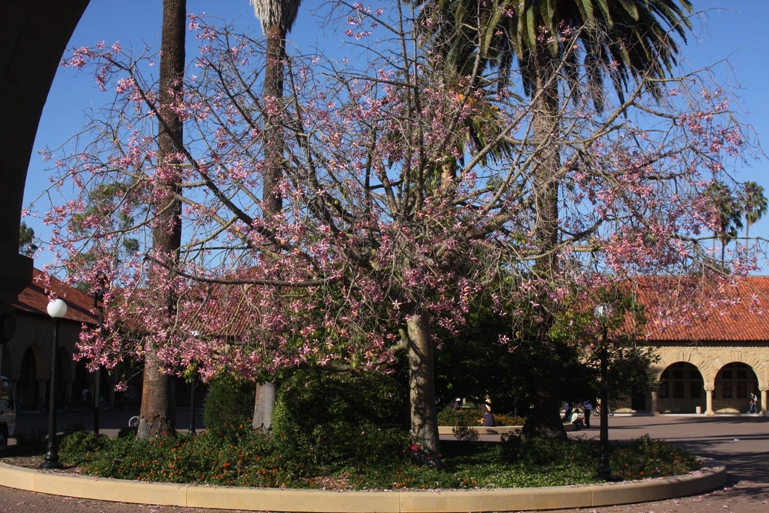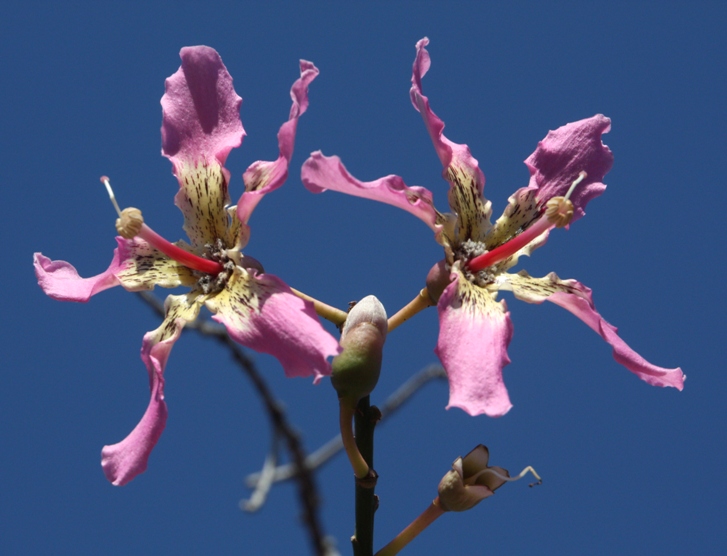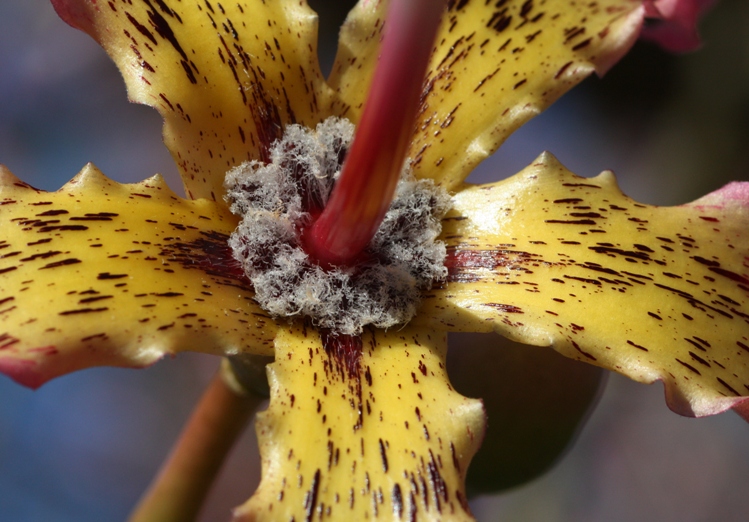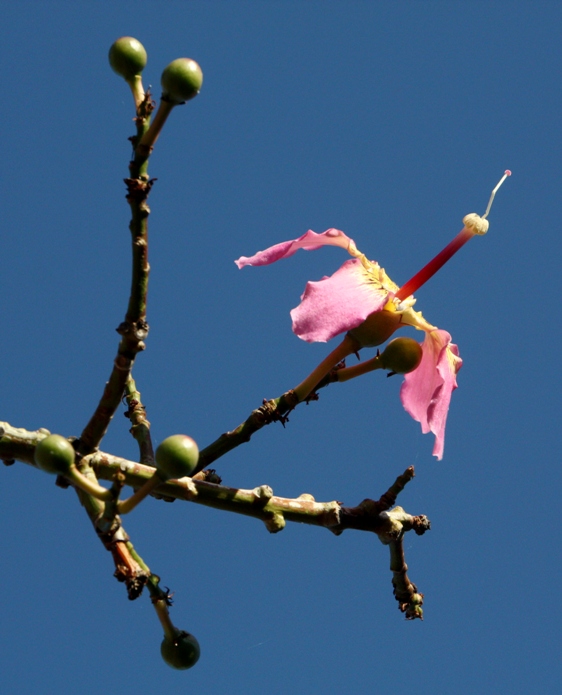Silk floss tree



I have long been struck by the unusual nature of the tree: In fall, it exploded with beautiful pink flowers - largely in the absence of leaves. It is a magnet for hummingbirds, butterflies, and bees. Thanks to Herb Fong for helping me to identify it.
The naming/classification of the tree is surprising and confusing.
OK. OK. The tree is:
Another closely related genus is Adansonia which is comprised of the eight species of Baobab tree.
These three genera were formerly part of the Bombax family Bombacaceae.
Bombacaceae was shown to be a heterogeneous group (polyphyletic) and these three genera were reassigned
to the much larger Malvaceae (mallow or hibiscus) family. This family is apparently also under
scrutiny.
The three genera are part of the subfamily Bombacoideae.






 Flowers
Flowers
 Orchids
Orchids
 Lobelia
Lobelia
 Buddhas hand
Buddhas hand
 Tulips
Tulips
 Protea
Protea
 Nepenthe
Nepenthe
 Rafflesia
Rafflesia
 Flowers of Borneo
Flowers of Borneo

| Robert's home page | Birdz | The Stanford Dish | Hiking | My yard | Flowers | Orchids | Protea | Lobelia | Top of page |

Modified: October 11, 2008
Created: October 11, 2008